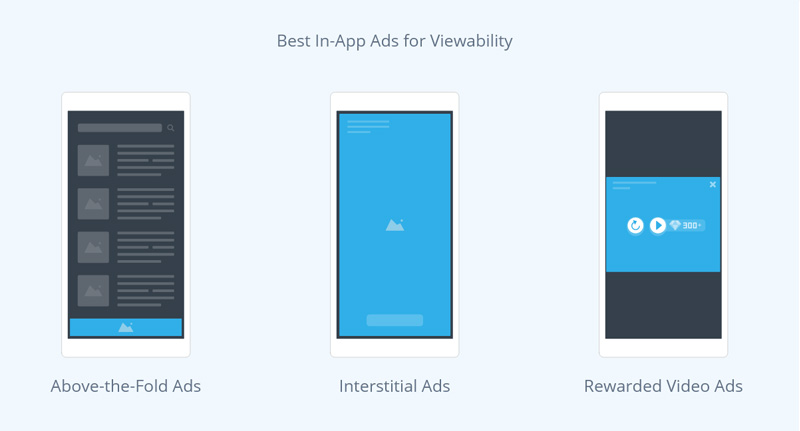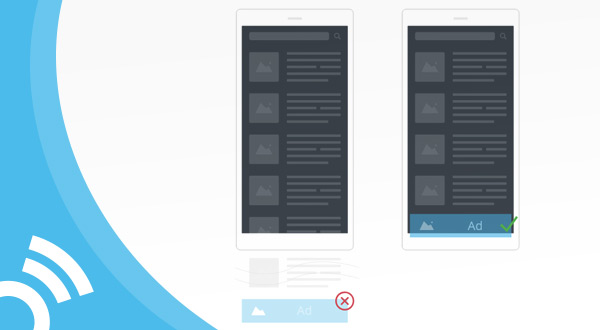Improving in-app ad viewability rates is about maximizing the total number of viewable (versus served) ad impressions. For an in-app ad to be considered viewable, the creative must be within the viewable area of the app for a minimum period of time. For publishers and app developers, high in-app ad viewability rates are key for optimizing ad performance, increasing advertiser satisfaction, and improving their bottom line. This is because advertisers are willing to pay more for ad impressions that were verified as viewable — and some are even limiting their budgets to only those impressions that include this data.
Here are some top tips for Smaato publishers to achieve a high viewability rate:
1. Maximize the Speed of Your App
Viewability rates increase when apps can quickly load ads — particularly in emerging markets where connection speeds tend to be sluggish. Here are two aspects to focus on in order to improve the speed of your app:
- Choose the Right Refresh Rate
Ensure that your refresh rate gives the user the opportunity to see the ad. Refreshing ads too often will negatively impact viewability rates. We recommend showing ads for at least 60 seconds before refreshing the ad space. - Reduce Ad Latency
Ad latency is a primary lever that influences viewability. The best way to reduce or even remove ad latency is to integrate via the most current Smaato SDK (see tip #4).
2. Optimize the Layout of Your Ads
Certain in-app ad formats and placements give the ad a higher chance of making it into the viewable area — thus increasing viewability rates. To maximize the viewability rates of your inventory, we recommend choosing the following ad formats and placements:
- Above-the-Fold Ad Placements
Improve your viewability rate by placing at least one ad space above the fold. Also keep in mind that having too many ads below the fold can harm your viewability rate, as there is a greater chance that these ads will never make it into the viewable area. - Interstitial Ads
Interstitial ads fill the entire screen during a natural transition in the app. As a result, both interstitial display and interstitial video ads tend to have higher viewability rates than most other display and video ad formats. When using interstitial ads, however, publishers should not sacrifice user experience for a high viewability rate. - Rewarded Video Ads
Since rewarded video ads are opt-in and full-screen, advertisers are paying for engagement rather than an impression. Rewarded video ads have both the highest viewability rates and completion rates — making them a great choice for publishers that want to attract big brand budgets and high eCPMs.

3. Prioritize User Experience
While in-app ad viewability rates are important, user experience should remain the highest priority when choosing ad formats and placements. After all, an ad impression can only occur when there is an active user there to request the ad. Here is how to maintain a high-quality user experience that compliments your ad monetization strategy:
- Keep User Attention With Engaging Content
For an in-app display ad to be considered viewable, at least half of the ad’s pixels must be in the viewable space of the device for at least one continuous second. Increase the chance of your ad staying in the viewable area of the user’s screen and meeting the minimum time requirement by having the ad share screen space with engaging content that holds user attention. - Use a Clean Design
In-app ad viewability will improve through the use of good design principles: a clear visual hierarchy, sufficient white space, and clean design. When an unfriendly ad placement causes a bad user experience, viewability suffers.
4. Make the Right Connections
The in-app advertising industry is evolving fast. To make sure you are able to keep up with the latest standards and best practices, it is crucial to make the right connections with trustworthy partners.
- Follow Viewability Guidelines from Trustworthy Sources
As viewability standards evolve, stay informed through trustworthy initiatives such as the Internet Advertising Bureau (IAB) and the Media Rating Council (MRC). - Integrate via SDK
Using an SDK integration to serve ads — and keeping it updated — ensures that you are deploying the latest measures available on the Smaato platform to ensure viewability.




